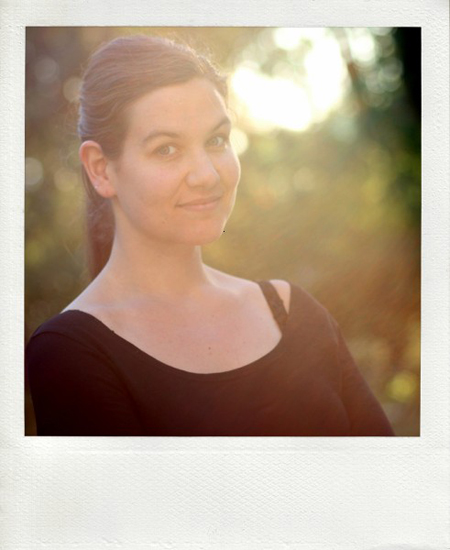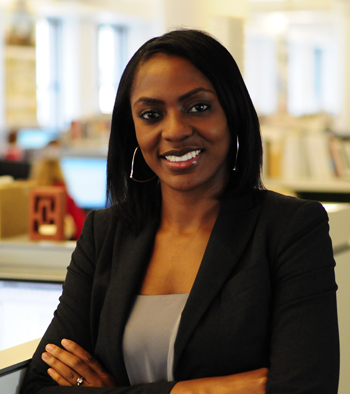Last year, during the film awards season, the media put the spotlight on the scarcity of female directors in the movie business: only 7% of the total number of directors. Those talks were ignited by the presence of a strong contender – The Hurt Locker – directed by Kathryn Bigelow; she eventually became the first woman ever to win the Oscar for Best Director. The dozens of articles on the dearth of female filmmakers often failed to mention another, yet more alarming statistic: that “women make up only 2% of cinematographers on the top 250 grossing films” (source: Center for the Study of Women in TV and Film). If directing is a boys’ club, cinematography is an even harder field to break into.
Today I’m honored to present you an interview with an extraordinary cinematographer, photographer and documentary filmmaker: Magdalena Hutter, whose work is not only beautiful, but also highlights important social issues. Here is her inspiring story.


What is your name, age, and location?
Magdalena Hutter, 31, Cologne, Germany.
What is your profession?
I am a documentary filmmaker, cinematographer and photographer.
What did you study in school and what degrees do you have?
I started with theatre, television, and film studies, Spanish, and Portuguese at the University of Cologne and then switched to documentary filmmaking and cinematography at Munich University of Television and Film. I have been working as a director of photography for years alongside my studies and am currently preparing my thesis film, a documentary essay titled “Reconquista”.
What was your first job?
At a movie theater, the UFA Filmpalast in Cologne. An old theater, straight out of the 50s – it actually just closed down a few months ago. After selling ice cream and checking tickets for a few weeks I got put in charge of decorating the theater’s displays – and I got to monkey around on a big ladder, 5 meters above the ground, exchanging the posters out front and spelling out titles with big black letters. The best part of the job, besides watching movies for free.
Who or what inspired you to break into your current line of work?
It would seem like cinematography is an obvious choice for someone who loves both movies and photography, but it took me a while to figure it out. When I finally did, I applied for film school – and really still had fiction film in mind. For one of the applications I had to hand in a photo essay about the central produce market. I went there at 5 a.m. on a freezing morning, and after some roaming around came across a group of Turkish truck drivers that were having breakfast in the back of one of their empty trucks. They sat around a small propane burner, drank tea, and grilled bread and cheese. I ended up spending several hours there, eating with them, taking pictures, and talking with them with our hands and feet. It was my first “documentary moment” – when your work gives you an excuse to go places and talk to people you normally wouldn’t, and you realize how easily they let you in and share their lives and their stories with you. It was an amazing experience and I was hooked instantly. I still enjoy doing camera work for fiction films very much, especially on small projects that leave room for improvisation and spontaneity. But my heart is in documentary filmmaking.
Name/describe what has been your most rewarding project so far?
Part of what drew me to documentary films was a desire to create and do something useful at the same time. I’m sure there are other ways to achieve this and I wouldn’t dare to claim that my work does a lot of “good”, but sometimes you get an idea that what you do does mean something to others as well. When people tell me that a film touched them or made them realize something they hadn’t before – that is really rewarding. This has happened a lot with Voices of the Attic, a documentary short I shot with my friend Anna Brass in 2010.
Making documentaries gives me the opportunity, again and again, to get to know amazing people I otherwise would never have met. Finnish filmmaker Pirjo Honkasalo put it like this at a masterclass last year: “We have a very strange job, where we use other people’s lives to express ourselves.” She is right – I couldn’t do what I do without others letting me into their lives. I am grateful for that and I feel a responsibility towards them. So when others get something out of the films I make with their help, it is very encouraging.
“Voices of the Attic” – find out more about this film.
Name/describe one incident when being a woman has helped your career?
Film is still very much a men’s world and as a young woman, I often feel I am not quite taken seriously. The upside of that is: people consider me harmless. I think I get away with more than male filmmakers – people can sometimes react very strongly to somebody with a camera, and I feel like being a woman has helped me deescalate those situations in the past. And I feel like it sometimes makes it easier for people – women especially – to open up to me.
Name/describe one incident when being a woman has hindered your career?
During the first years of film school I had a hard time getting directors to work with me. Most young directors would be looking for a director of photography who seemed experienced and offered the sense of security about their work that they still lacked. What that usually meant was that they would pick the male cinematography students – because they just assumed that they were more capable of the technical skills, but also because the male students would generally just claim to know things they didn’t necessarily know and be a lot “louder” when it came to advertising themselves. My approach has always been – if I don’t know something, I won’t pretend that I do, but I’ll get around to learning it as quickly as I can. I’m still much more comfortable with that than with boasting about skills I may not really have – and thereby potentially putting the project at risk. And the directors I work with today appreciate that.
“Triptych, a Documentary Video Installation” – find out more about this project.
Who is your role model or mentor (alive or dead)?
I don’t have a particular role model – I think I’ve sort of pieced one together from all the impressive women filmmakers I have met over the years and tried to have that guide me along my way. When I think of those women, what strikes me most is a combination of strength and gentleness. I met Kim Longinotto at a festival a few years ago. I’d known her films for years and was almost shocked when I talked to her: she was so friendly and soft-spoken – nothing like I had imagined her. I had just assumed that, in order to make such strong films about tough subjects, you had to become really tough yourself. I am still convinced that an extreme amount of persistence and courage are vital to do work like hers – but it was very inspiring to see that you can do this work, deal with these issues, be successful, and still be such a generous and gentle person.
If you could give one piece of advice to a woman starting out in your field, what would it be?
Trust your own eyes. Be open to learning from and being inspired by others, but when it comes down to it, trust in yourself. Trust that what you find beautiful, what you feel is right, will lead you to discover your own voice. Trust your gut, when it comes to people and situations. Especially when dealing with issues you care about, it sometimes feels like nothing is more important than the film you’re making. Love your work and give your best, but try to tell yourself every once in a while: It’s only a film.
Links:
Magdalena’s website: magdalenahutter.com
![]() Magdalena’s channel on Vimeo
Magdalena’s channel on Vimeo
– Interview by Elena Rossini

